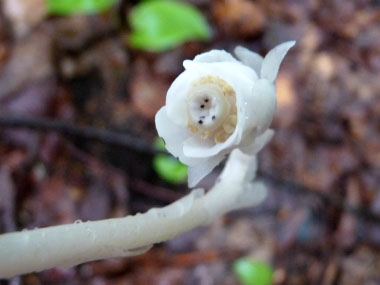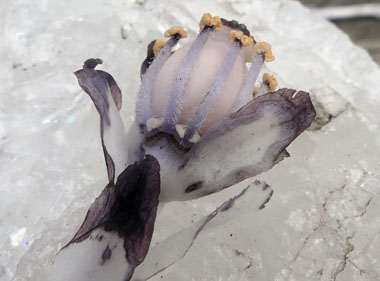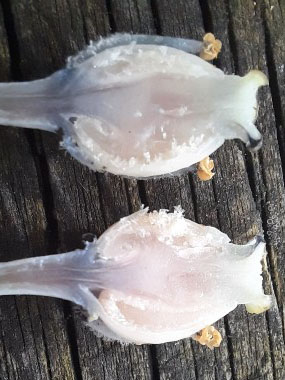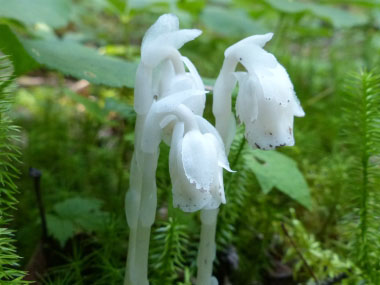








To support our efforts please browse our store (books with health benefits, etc.).
IMPORTANT: this plant contains andromedotoxin therefore use in moderation. According to the University of Bristol the human digestive system can break down andromedotoxin into harmless compounds, HOWEVER, when too much as been consumed then the individual will experience symptoms of vomiting and stomach upset, as well as reduced blood pressure.
More often than not the Indian Pipe is often thought to be a fungus yet it is a flowering plant. It belongs to the Ericaceae (blueberry) family. This is one of about 3,000 species of non-photosynthetic flowering plants. Monotropa uniflora can actually grow in dark environments because it is not dependent on light for photosynthesis. These plants were once believed to absorb all nutrients from decayed organic material, but it is now known that they are associated with a fungus, which obtains nutrients directly from the roots of green plants. Therefore this makes the Indian Pipe a parasite, using the fungus as a bridge between it and its host. It is also known as the Ghost Pipe, Pipe plant, or the Corpse plant. It is native to North America.
Distinguishing Features
This is very easy to spot when mature as its shape resembles a pipe and it is white. When bruised or as its lifecycle ends then it becomes black.
Flowers
Single flowers grow to about 2cm (1”) long nod, are bell-like and occur at the end of the stem. The 4 to 6 (usually 5) translucent white petals are barely discernable from the reduced sepals and faint, scale like leaves that fall over the flower head. All parts of this frail, plant blacken quickly from bruises.
 Fields
of Nutrition has medicinal benefits and vitamin/mineral content of Indian Pipe.
Fields
of Nutrition has medicinal benefits and vitamin/mineral content of Indian Pipe.
Leaves
This plant has no leaves. There are pale white scales along the stem.
Height
10 to 20 cm (4 to 8”).
Habitat
This plant occurs in rich habitats, dense moist forests usually with a lot of surface leaf litter, often in a situation that is too shaded for autotrophic (photosynthetic) growth. The Indian Pipe grows throughout Canada, most of the U.S., some European countries, eastern Asia, and possibly parts of South America.
Edible Parts
Indian Pipes have had some edible uses over the years although it has been and continues to be used extensively for medicinal purposes. According to Plants for a Future `the whole plant can be cooked. It is tasteless if eaten raw, but has a taste like asparagus when it is cooked`. Depending on your location this may be a protected plant – check with local laws. Also, there is a warning in regards to edibilty – see below!
Other Name
Ghost Pipe.
Winter Survival Food Handbook

PDF Plant Magazines
Types of Wild Food
Geographic Zones Seasons
Disclaimer
EdibleWildFood.com is informational in nature. While we strive to be 100% accurate, it is solely up to the reader to ensure proper plant identification. Some wild plants are poisonous or can have serious adverse health effects.
We are not health professionals, medical doctors, nor are we nutritionists. It is up to the reader to verify nutritional information and health benefits with qualified professionals for all edible plants listed in this web site. Please click here for more information.
Why Edible Wild Food?
- Food costs are rising
- Free, wild food is readily abundant
- Wild food adds nutrition to your diet
- Wild food can help treat various medical conditions





